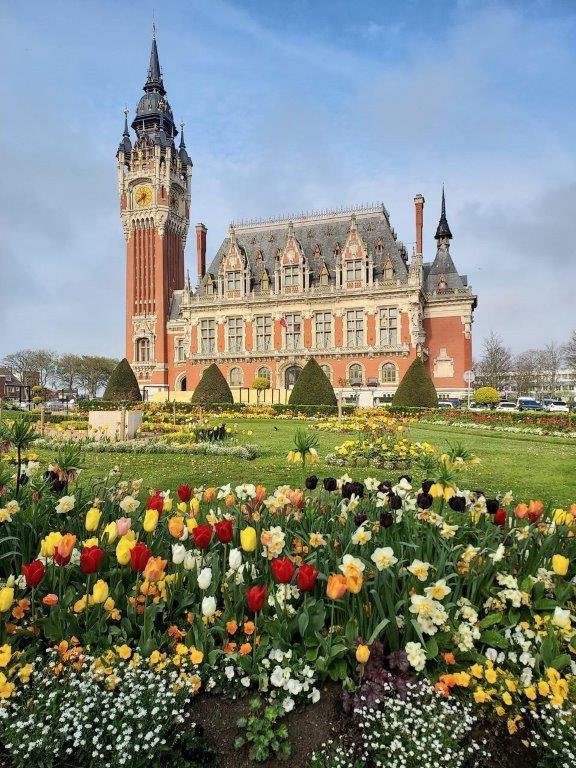After a nice day in Nieuwpoort, Belgium, our time had come to do The Big Challenge: sailing to Calais, which means crossing the Strait of Dover (in French: “Pas-de-Calais” and in Dutch “Nauw van Calais”). This part of the Northsea is the smallest part between France and England: from Calais to Dover is only 33 kilometers. The tricky part for sailing vessels is: crowded with fast ferries and sea ships + because of the narrow passage the current can really be strong and give you trouble while sailing.
When we started sailing from Nieuwpoort to Calais, we checked the weather forcast for windspeed, wind direction and the tides. It looked good: maximum 25 knots of wind, coming from North and the current would be ok (low water when we would pass, so pushing us from the coast in stead of towards to coast). The average depth of the water would be 60 meters, but also places of 25 meters.
To our surprise, the seatraffic was very calm that day. We didn’t see any ferry and also the seaships were further from the coast than where we were sailing at that time. It was beautiful to see the white cliffs along the side of France. We had heard about the White Cliffs of Dover, but we stayed more towards the French coast, but also there beautiful white cliffs. You could hear on the VHF radio the English coastguard and also the French coastguard. Sometimes our instruments changed one hour in time to UK time and then back again to French time. That was funny to experience. So we were very relaxed, I even made ‘Wentelteefjes’ (French toast) during sailing.
When we approached the harbor of Calais, we were surprised how cosy the harbor for yachts was, again very quiet with ferries and containerships. So we were happy to arrive in that harbor.
Next surprise would turn out to be visiting the city of Calais. When I think about Calais, in my mind it would be a busy, industrial area, but it turned that Calais had a great historical city center with a beautiful old Theater, great Hotel de Ville (City Hall) surrounded by flowers. A charming beach with lots of booths. So when we cycled through the city we kept looking around.
While we were cycling along the beach, in a sunny and relaxed atmosphere, all of a sudden we heard a loud noise, a few roars and we saw steam coming up behind some of the restaurants at the beach. What’s that? The head of a Dragon lifted above the roofs of the restaurant and we were stunned: this was a mechanical dragon, the symbol of the City of Calais. And it was ‘walking’ along the beach, makings sounds, steam, fire and carrying on it’s back 30 people. It turned out to be a great invention, made of steal, wood, leather, copper, etc. It is operated by 4 people who move it’s head, keep it walking and even can spread it’s wings (25 meters wide). The Dragon can take 50 people up it’s back for a tour of 30 minutes. It’s a great attraction, I made a video of the Dragon while it passed us on the beach:
During our sailtrip we are inspired by nature, but also by handmade creations like this. The details and joy is clearly seen in this project of The Dragon. More about this starling Dragon and what it can do (blinking with it’s eyes, yawning, bending on it’s knees, etc): https://www.compagniedudragon.com/?utm_source=Vacancesweb&utm_medium=article&utm_term=NL
The next morning we cycled in 1 hour south of Calais: there were the Cap Blanc Nez and Cap Gris Nez: the white cliff and the grey cliff. We had a great view up the White cliff and could see the colors and the landscape.
The cycling through the little villages south of Calais towards the White Cliff, reminded me of the many holidays I spent in France with my parents and brother. The French Bakeries (Boulangerie) you see, typical French words on plates . I really like the atmosphere in France, so I am glad we will spend the next months sailing the West coast of France, all the way from Calais to Biarritz!










